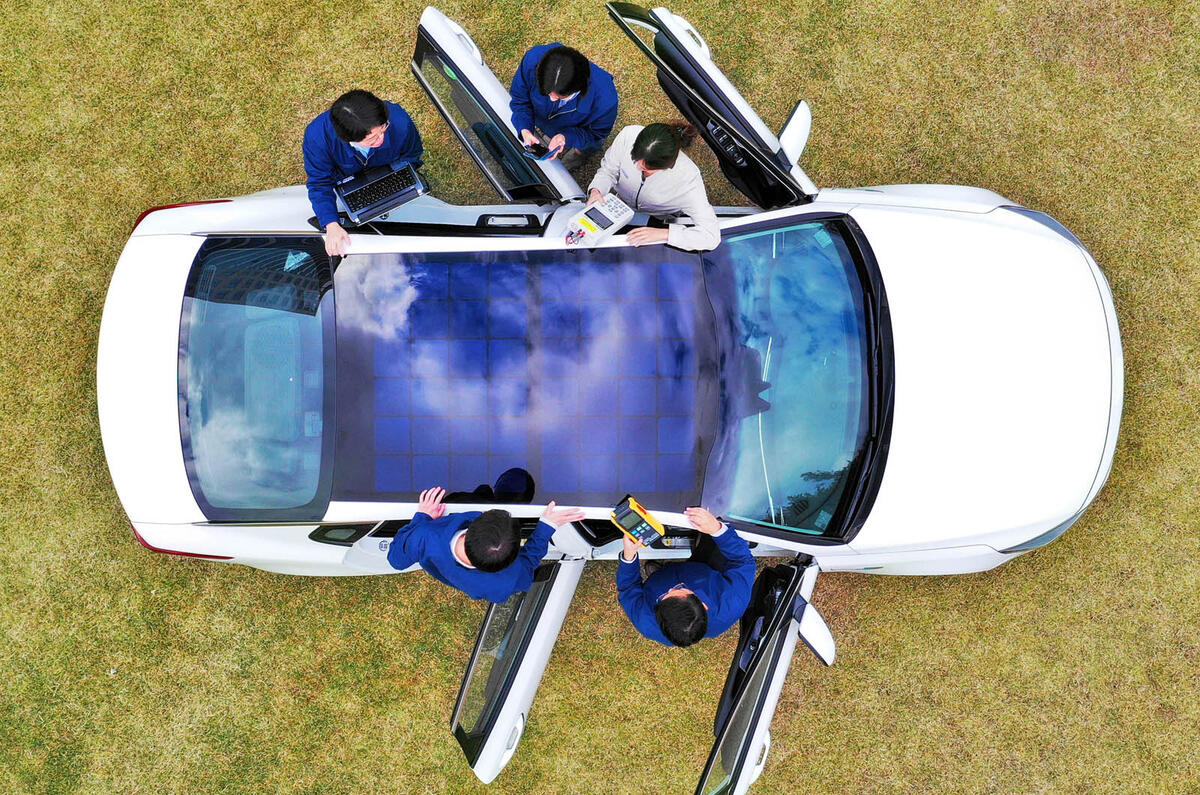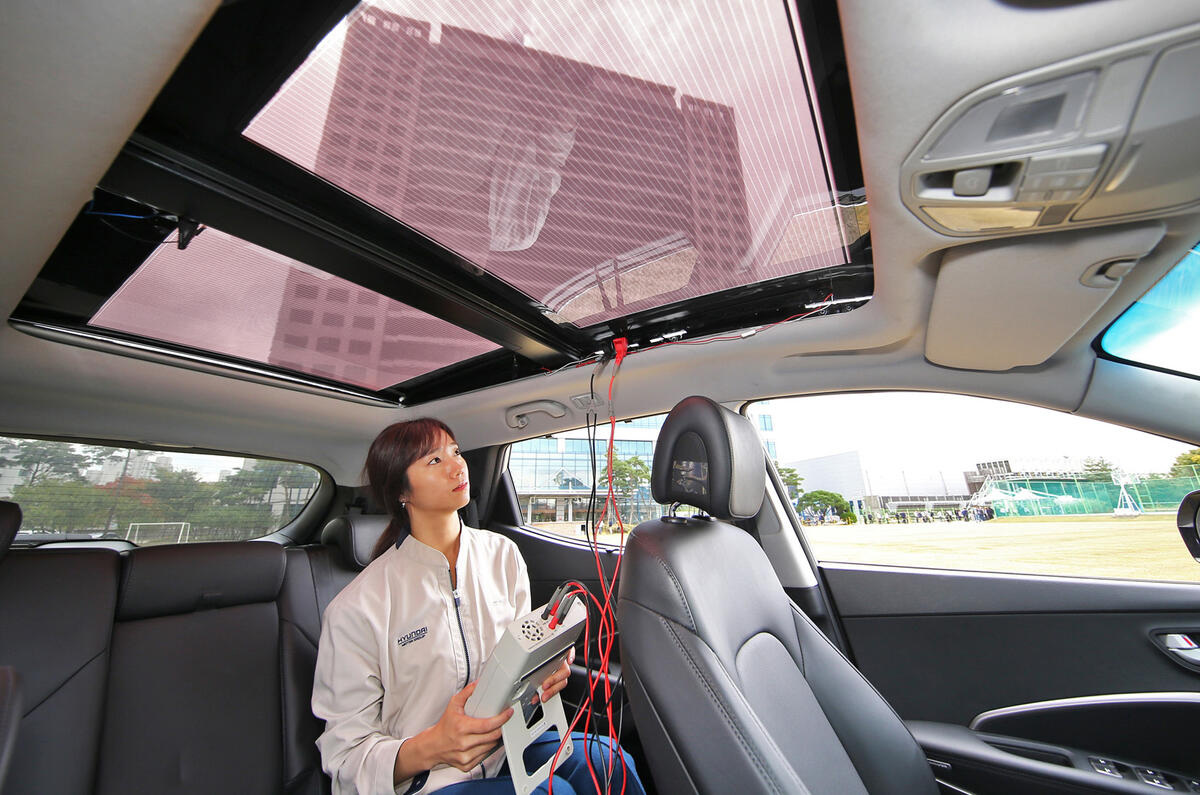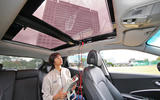Hyundai and Kia will introduce solar charging panels on selected models from 2019 onwards – including some with internal combustion engines.
The Hyundai Motor Group is currently developing three different types of solar roof, for cars with hybrid, full electric and internal combustion engine (ICE) powertrains respectively. While solar charging panels have been fitted to vehicles previously, including on the Toyota Prius Plug-in, this is believed to be the first time the technology will be applied to an ICE-only car.
The first type, due to arrive next year, is for hybrids. It's capable of charging 30-60% of the battery during a day, depending on the weather. The vehicle can then use that energy to reduce engine usage, thus increasing fuel economy and cutting CO2 emissions.
The second is designed for ICE-only vehicles and features a semi-transparent solar roof that charges the vehicle's battery. That will be followed by a third system for fully electric vehicles, which will feature solar panels on both the roof and bonnet to maximise energy output.
All three types will use silicon solar panels that can generate up to 100Wh of electricity, which is then fed through a controller to increase efficiency before being sent to a battery.
It hasn't yet been confirmed which Hyundai and Kia vehicles will feature the technology first or when it's likely to become available in the UK.
Jeong-gil Park, Hyundai Motor Group’s engineering boss, said the panels were the first of “many different types of electricity-generating technologies” that would be integrated into the firm’s vehicles.
Read more
Toyota Prius Plug-In long-term test report
Opinion: the Kia e-Niro is an EV revolution











Join the debate
Add your comment
.
It is generally accepted that the Solar Constant at Sea Level on a surface perpendicular to the suns rays is 1kW/m.sq. This is the amount of energy actually arriving. Outside of the tropics and where the sun is not overhead but lower in the sky the rays have to pass through more atmosphere and energy available is substantially reduced. Factor in the efficiency of the Photovoltaic circa 20% for a good one and 100w per m.sq for a car roof is about right... at high noon on a cloudless day, not parked in the shade, in August on a south facing slope of about 45 degrees. PV energy is not "free energy" Don't forget they have to be made first, and the Silcon used in their construction is produced from quartz sand at very high temperatures producing quite a large carbon footprint. Life cycle CO2 emmissions for a PV in the UK is an estimated 58gCO2/kWh.
Leslie Brook wrote:
Thats very interesting, thank you for the detail!
It did say.....
That this solar idea might not come to the UK.......
Great but
We're looking at incremental gains in efficiency here, so it's important to know what the weight penaly of these panels and any associated wiring and electronics is. I don't doubt the panels generate useful power in good conditions, but does this offset the extra weight? This particularly applies with a normal combustion engine, where the solar power would only be useful in reducing the alternator load when the engine is running. With an elecric or hybrid car, there is at least some scope for capturing a decent amount of energy when the car is parked.